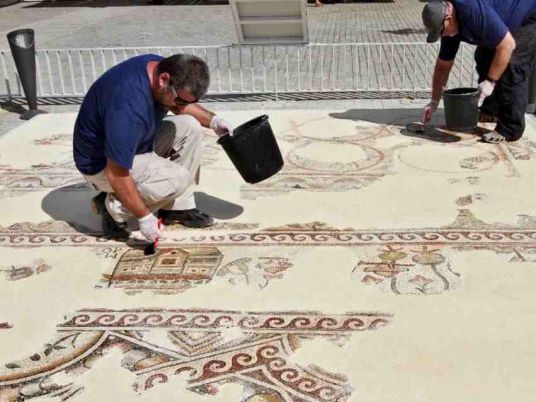
A rare Byzantine-era floor mosaic discovered in Israel that depicts streets and buildings on a "city map" of a place in Egypt will be presented to the public Thursday after having been restored.
The mosaic of about 3.5 metres (11.4 feet) by 3.5 metres served as the floor of a church that no longer exists, the Israel Antiquities Authority said Tuesday.
"The appearance of buildings on mosaic floors is a rare phenomenon in Israel," the authority said.
"The buildings are arranged along a main colonnaded street of a city, in a sort of ancient map. A Greek inscription preserved alongside one of the buildings… indicates that the place which is depicted is the settlement Chortaso, in Egypt."
It said Christian tradition holds that the Hebrew prophet Habakkuk was buried in Chortaso, and the 1,500-year-old mosaic might refer to the origin of the church's congregation.
The mosaic was discovered two years ago in an industrial zone in the southern city of Qiryat Gat.
"The artist utilised tesserae (tiles) of seventeen different colours in preparing the mosaic," the authority said. "The investment in the raw materials and their quality are the best ever discovered in Israel."




